Dealing With Stuck Ferrules The Right Way
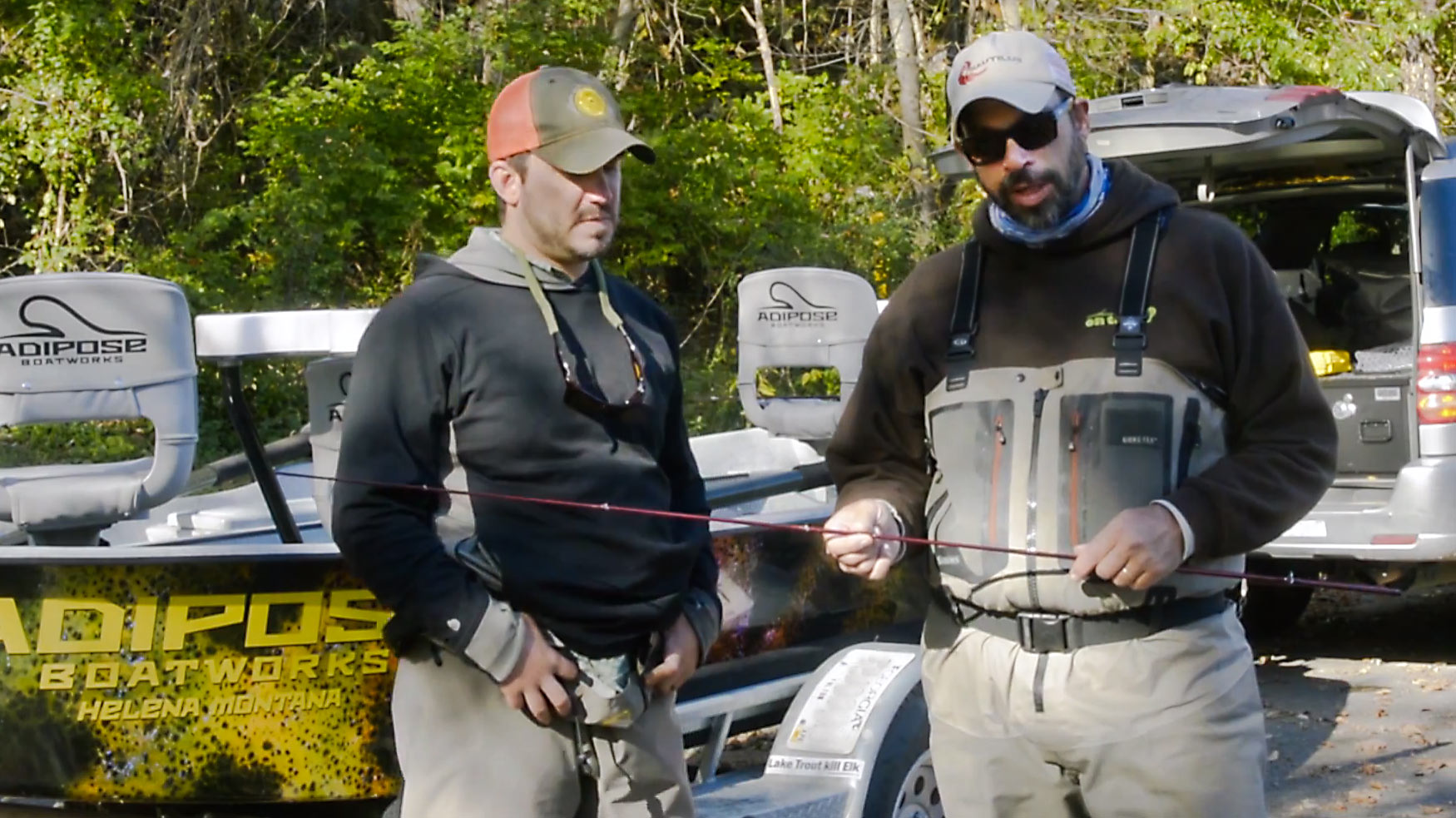
Here’s the best way to separate stuck ferrules on a fly rod.
Ferrules stick. It’s a fact of life and when pulling them apart you can break a rod if you’re not careful. I learned this trick from an old friend and skilled bamboo rod maker, Gary Lacey. With the help of a friend you can separate those stuck ferrules in a second with no risk to you rod.
CHECK OUT THIS VIDEO AND SEE HOW TO SEPARATE SERIOUSLY STUCK FERRULES ON A FLY ROD.
Read More »The UV Chocolate
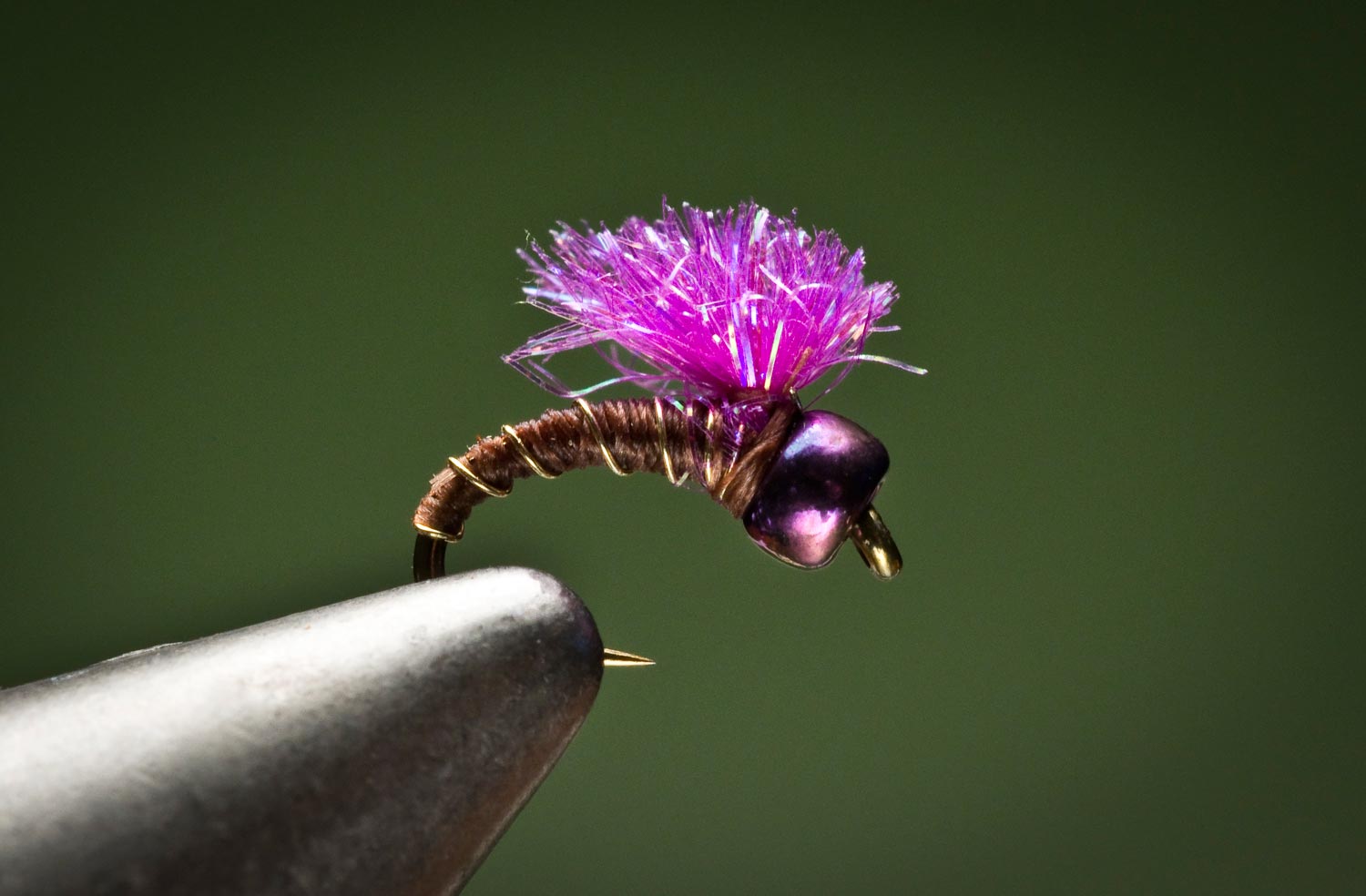
HAVING AN EFFECTIVE SELECTION OF MIDGE PATTERNS CAN MAKE THE DIFFERENCE BETWEEN A GREAT DAY OF TROUT FISHING AND A DAY OF SELF LOATHING.
Often days when the midge bite is at its best nothing much else seems to be happening hatch wise. That’s an important reason to know your midges. They can make the difference between catching a lot of fish or no fish.
It’s not uncommon to see great midge hatches on cold overcast days when other bugs stay home. The great thing about the UV Chocolate is that these are the conditions where it shines. No really, it shines. The the UV ice dub wing, which already reacts to UV light is also treated with Spectrum Responce for extra highlighting.
Trout’s eyes are highly sensitive to UV light and they use that sensitivity to find food on dark days or when water clarity is low. This flys highly reflective UV profile makes it a great tool on overcast days when midges are present.
Watch the video and learn to tie the UV Chocolate.
Read More »The Flats, Light Bottom vs. Dark Bottom
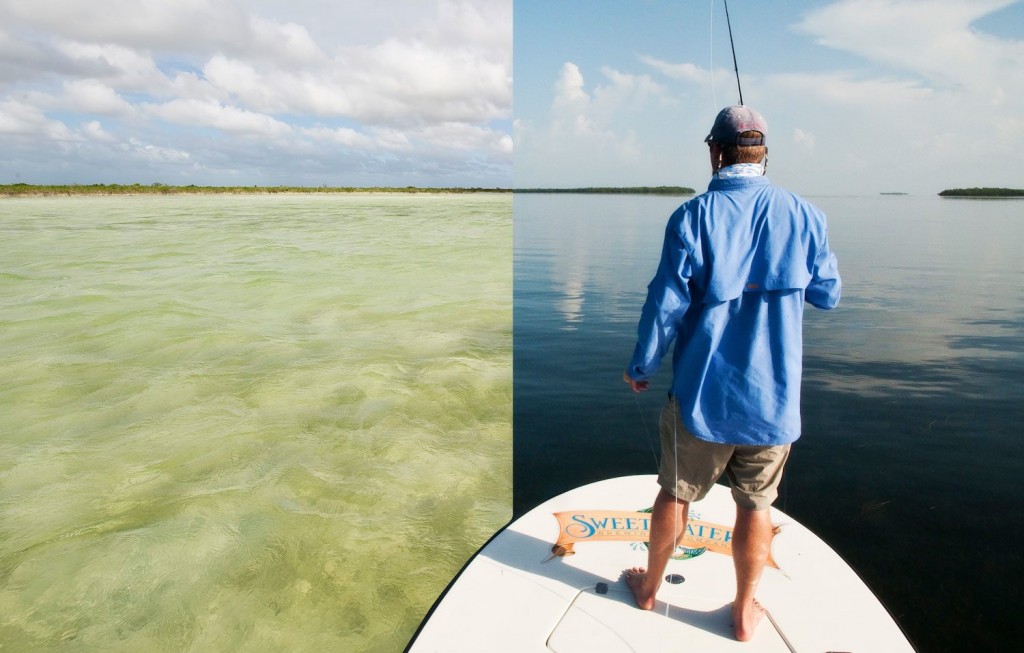
Water temperatures and seasons play an important role for fly fishermen fishing the saltwater flats.
Saltwater fish prefer to utilize different types of flats throughout the year to maximize their comfort and food intake. When I was new to the saltwater side of the sport, I never gave it much thought on why my guide was choosing to take me fishing on a light colored sandy flat, versus a grassy or dark bottom flat. It wasn’t my expertise, so I just went along with everything. Quite a few years have past since my rookie fishing days in saltwater. I’ve logged many more trips on the saltwater flats, and I’ve taken the time to pick the brains of the saltwater guides, so I could better understand why they choose one type of flat over the other during the year. Below is a quick recap of information on what I’ve gathered from numerous saltwater guides on this subject.
Fly fishing on saltwater flats is very similar to bass fishing on large reservoirs, in the fact that water temperature is critical in both for consistently locating fish and productive water. Both freshwater and saltwater fish strive to maintain stable underwater enviornments. When water conditions change, so does the habits and behavior of the game fish we’re targeting, as well as, the food sources they prey upon. Fly fisherman that understand this, are quick to match their fishing tactics with the present conditions on the water, because they know it’s critical for staying on top of the fish and in the action.
Light bottomed flats reflect a large portion of the sunlight. When water temperatures are at the extreme end of the comfort zone of saltwater fish, generally during the months of July, August and September, fish will often prefer to frequent light bottomed or sandy coral flats because the water temperatures will be a little cooler. When fly anglers have the option, it can be best to scout and fish these light bottom flats first, over other dark and grassy bottom flats.
On the other hand, when a strong cold front comes through, drastically dropping water temperatures or during the winter months of the year, when water temperatures are consistently colder, saltwater anglers should begin turning their attention more towards scouting and fishing the dark bottomed flats. These dark bottomed, grassy flats,
Read More »The Importance of Changing Flies on the Water

I’ll usually fish for about thirty minutes with my first rig of the day, and if I’m not getting any hookups, I’ll begin regularly changing my flies out until I find a pattern that works. The willingness to change your flies on the water when your not getting bites, is often the key factor in determining whether you have a good or bad day of fishing. I can’t tell you how many times I’ve had someone walk up to me in the parking lot at the end of the day and complain about how the fish weren’t biting. While I, on the other hand, had caught and released dozens of fish in the same section of water. Most of the time that discouraged angler stuck with a few patterns during the day, and didn’t change flies enough times to find out what patterns were really working. How do I know this? I know this because I was that discouraged angler many times early on, in my career.
It can be very obvious to us that changing flies is the answer when we’re able to sight-fish and see fish rejecting our flies. But many times you’ll find yourself fishing in conditions where sight-fishing isn’t an option. A few examples is when your fishing fast moving choppy water, water with significant glare, and stained water conditions. None of these will provide anglers the opportunity to get visual feedback. In these conditions, anglers should change their flies when they’re not getting bites for extended periods of time. If you know your rig is set up correctly (correct tippet size, fly size, split-shot amount, or indicator placement) for the specific water your fishing, and your making good presentations, a light bulb should be going off in your head telling you to change fly patterns if your not getting bites.
Sometimes you’ll find a single pattern will
Read More »The Eat
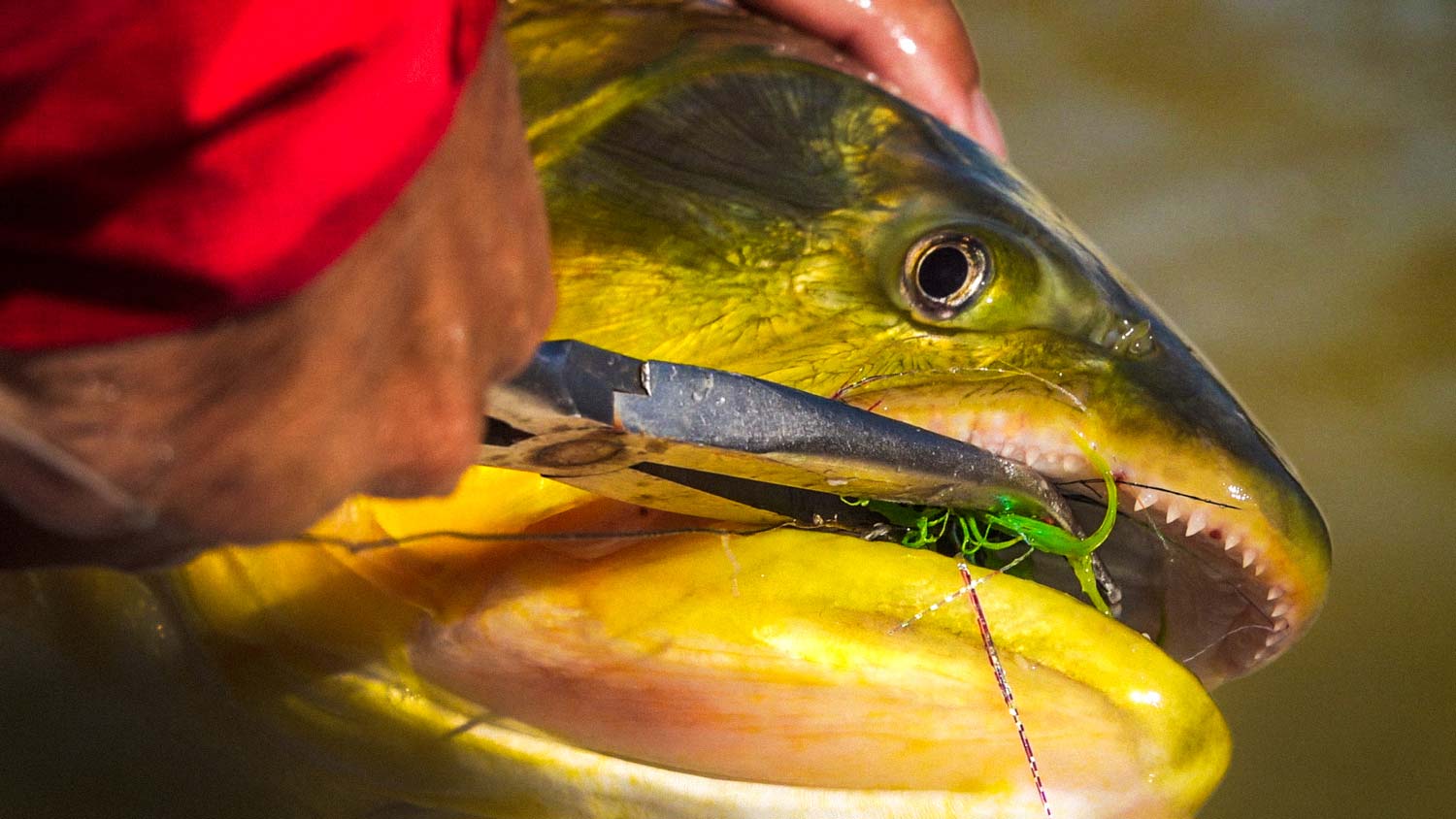
Fly fishing is all about the eat.
I remember a day floating the Snake River, about two decades ago. There was a freshly fallen tree jutting out at ninety degrees to the bank. Deep in the safe confines of its branches was a nice cutthroat, rising steadily.
“It’s an impossible fish,” my guide told me but I can’t resist a rising fish.
It took a couple of tries but I made a beautiful curve cast that fed the fly in through the branches and the big cuttie ate. Of course, the guide was right, it was an impossible fish. At least it was impossible to land but I got him to eat and that’s all I cared about.
I still feel that way. I never cry over a fish I don’t land and I don’t count the ones I do. I just like to make them eat. For me that’s a win. I know it, the fish knows it. Everything else is secondary. As rewarding as the eat is, not all eats are equal. I like feeding tough fish and I like a savage eat.
At the point where those two things intersect, you will find my favorite freshwater fish. The Golden Dorado.
I was hooked before I ever got started with dorado. I’ll never forget the first dorado that ate my fly. It scared the pants off me. I’d never seen anything like it. Not even a barracuda eat compared. Pure, unchecked aggression. It was fabulous. Factor in that the dorado is a truly difficult fish to fool, and by far the most physically demanding I’ve fished for, and you have an eat of epic proportions. I never thought I’d best that first dorado eat, until last week.
I was fishing the Upper Parana river
Read More »Beating The Seasick Blues
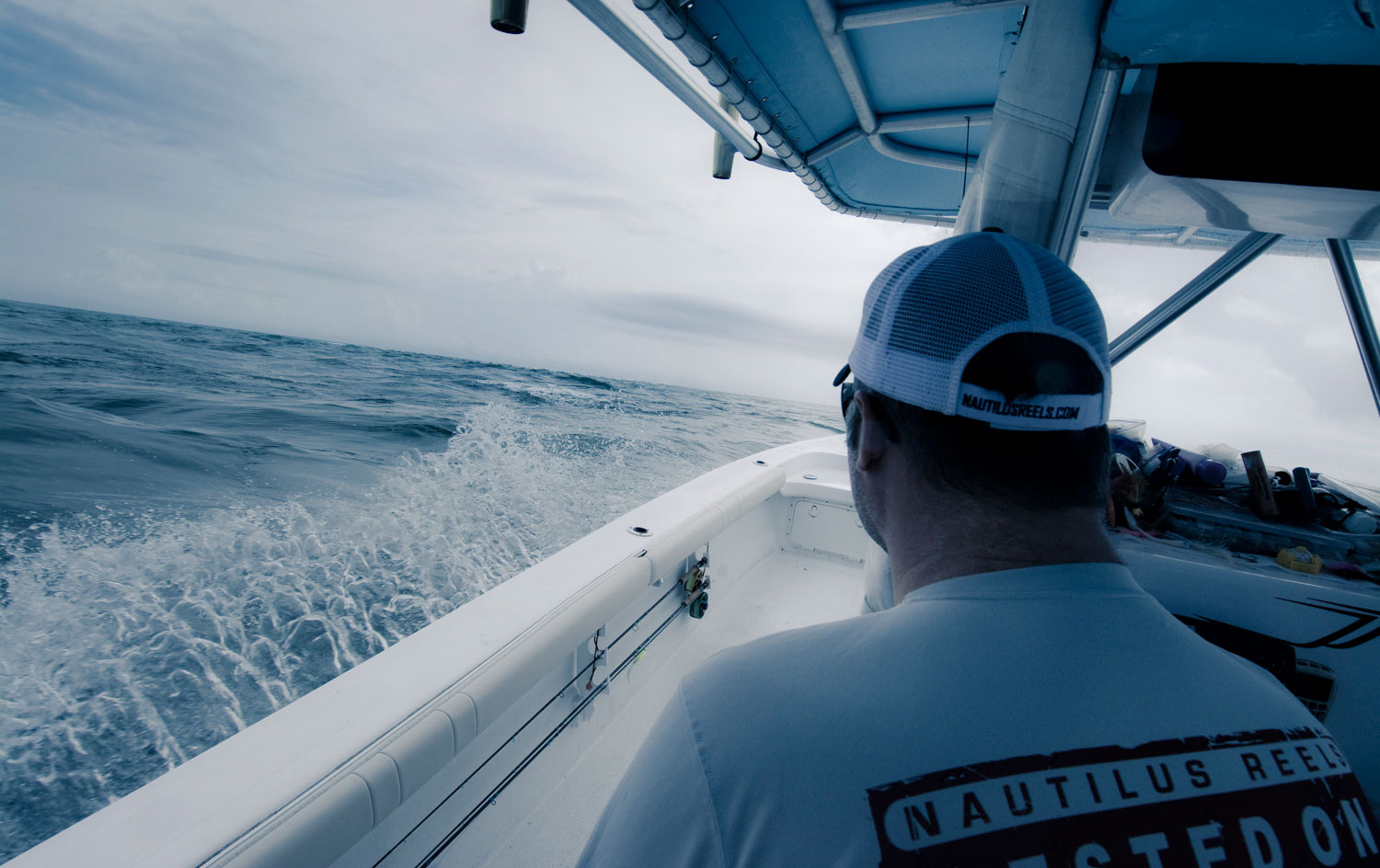
BLUE WATER FLY FISHING CAN BE A BLAST, IF YOU CAN GET YOUR HEAD OUT OF THE BUCKET.
I get seasick looking a pictures of the ocean. That might surprise you, seeing as I spend a lot of time on boats fly fishing in saltwater. I have significant damage to my inner ear as a result of a serious sinus infection and I can barely walk a straight line on dry land. It’s something I’ve learned to deal with and if you are prone to seasickness, so can you. Don’t let a little queasiness keep you from an epic fishing adventure.
If you don’t get seasick, I’m happy for you, but don’t stop reading yet. I have a little tip for you too. Don’t be an asshole! Seasickness flat out sucks. I can only compare it to food poisoning in misery. So if your buddy starts feeling bad on the boat, don’t give him a load of shit. He’s a man! Because he knows how bad it’s going to be and he’s out there anyway. Know this with absolute certainty, if you rip me when I’m sick I will make it my personal mission to cover every inch of you with my vomit. We’ll see who gets the last laugh.
I had the pleasure of fishing with Captain Ron Doerr out of Jupiter, FL the other day. Capt. Ron has been running blue water trips for about thirty years and for twenty of them he battled seasickness. He eventually beat it, but I can’t imagine what it must have been like to be sick every day for twenty years. That’s tough. Real man tough!
I did pretty well on my day with Capt. Ron and much of it was thanks to him. I can’t tell you what a difference it makes to fish with a captain who understands. How you handle the boat makes a huge difference and Capt. Ron understands that from personal experience.
Before I get into tips that will help you beat seasickness it’s good to understand why it happens. Seasickness is literally in your head. It’s a result of your brain receiving conflicting sensory input. When your eyes see the relatively still world of the boat and your inner ear senses the rocking of the ocean, the brain is confused. This confusion leads to an unconscious mismanagement of the digestive system. The stomach over produces acid while the rest of the digestive system is shut down, and voila! You’re puking.
SO IF YOU’RE A PUKER, HERE ARE SOME TIPS THAT MIGHT HELP YOU STAY UPRIGHT AND FISHING.
Read More »Familiar Waters, New Predators

“The last thing I expected to see was this big male brown trout becoming food.”
By this time, in any normal year, I am done with trout fishing. Not that I don’t enjoy it but water temperatures here in the South reach near-lethal levels in the summer and it doesn’t feel responsible to target trout under those conditions. Fortunately, a couple of my local rivers offer me a stellar alternative.
As local lakes heat up, striped bass move into the rivers for cooler water and, I suppose, to satisfy their anadromous instincts. These fish are big, strong fighters, and difficult to target with a fly. Pretty much everything I like in a fish. Once June rolls around, I spend most of my local fishing time focusing on them.
The problem is, this has been anything but a normal year. My local river, the Chattahoochee, has been a raging torrent of mud since early spring. Heavy rains, nearly every day, have kept the river un-fishable for almost the entire season. By last week, I desperately needed some time in my drift boat so I planned a quick trip to a favorite Tennessee tailwater. My buddies Geoff Murphy and S.C.O.F. editor Dave Grossman joined me for a two-day float.
Repair work on the downstream dam have the river on a low flow and rain has colored the water. Conditions are far from perfect but I’m excited to target some of the big brown trout that inhabit these waters. I showed up with a pretty anemic selection of dry flies and nymphs and two boxes full of big streamers. I’m ready for a challenge.
Geoff and Dave have been picking up some fish on beetle patterns and suffers but I haven’t had so much as a look at my streamer. Geoff gets a rainbow in the head of a big deep pool and quickly releases it. As soon as the fish hits the water a commotion starts.
A large dark form comes up out of the deep hole and runs the little rainbow down.
Read More »Fly Selection- as explained though a bag of Doritos
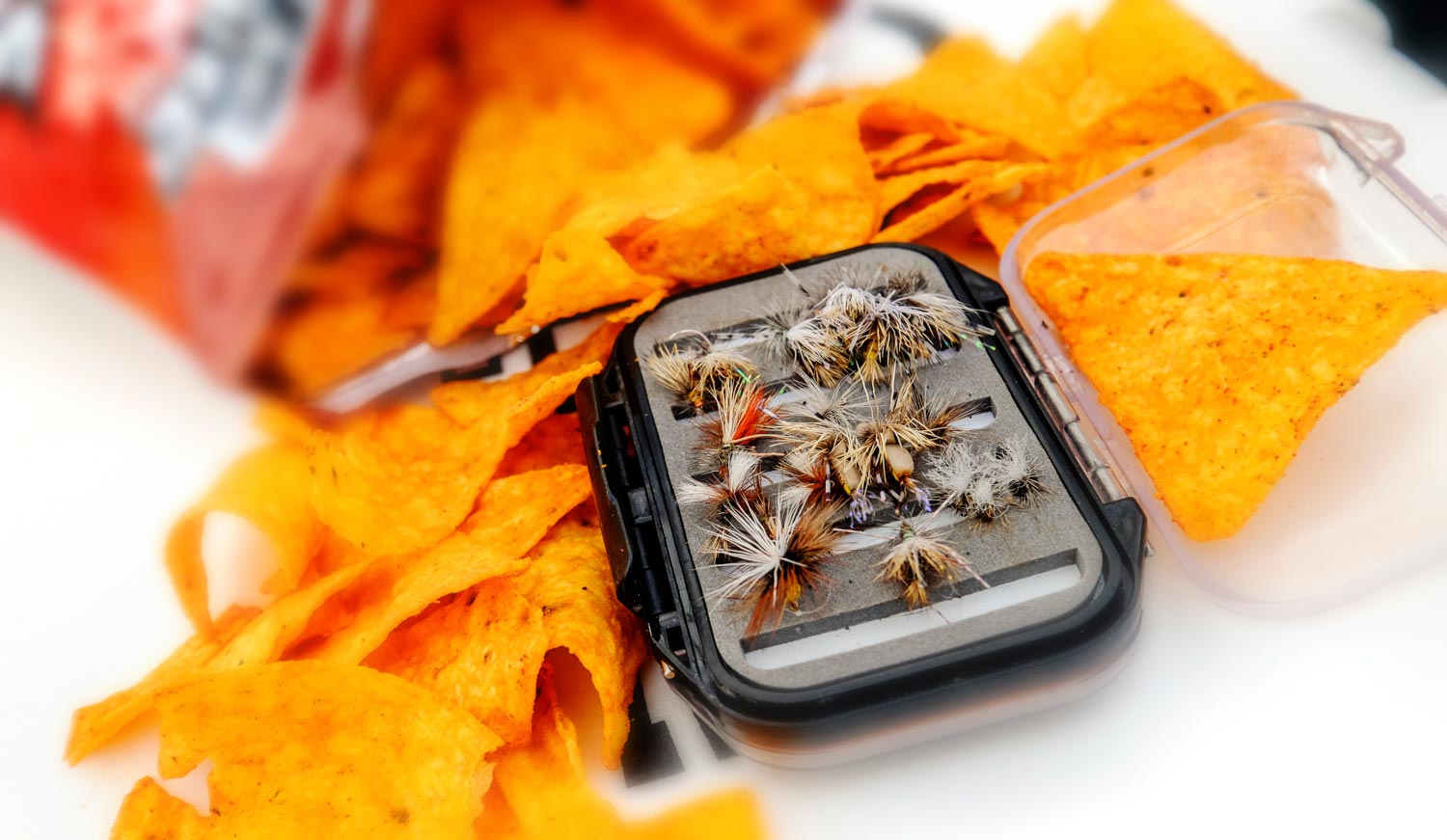
By Kyle Wilkinson
What’s more important, fly choice or presentation?
I’ve said it before and I’ll say it again, when it comes to trout fishing (in my opinion) most fish are going to care WAY more about a perfect drift than the exact ‘perfect’ fly- and this is coming from someone who makes a living on the pressured waters of Colorado’s Front Range. The analogy I use for this is with a Doritos chip. See if you can follow me on this one.
You’re hungry and thinking some chinese food sounds pretty good. While waiting on the chinese food to get delivered, someone shows up at your house with a bag of Doritos, opens them up and sets them on the table in front of you. Are you going to eat a few?
I’d say the answer is probably yes.
Even though Doritos might have been the last thing in the world you were thinking about eating, the fact that they were presented in such a way that you: A) had to essentially expend zero effort to eat a few; B) ‘make sense’ as a food source to us; and C) based off of memory taste darn good; the decision to dig in becomes an easy one.
So how does this relate to fly selection, you ask? Simple.
On the waters I fish, throughout the year we see all the standard Western hatches- BWO’s, PMD’s, Caddis, Stoneflies, Tricos, etc. With the wealth of information available online these days, figuring out what bugs are hatching during a certain time of the year has been made pretty simple. What I encourage you all to do – particularly the newer anglers reading this – is to turn down the dial on fly selection and turn up the dial on learning how to fish your flies perfectly.
Right now in Colorado, it is basically a midge and BWO game from a hatch standpoint. Read any local fishing report and you’re going to see many of the same flies being recommended – jujubaetis, Barr’s BWO emerger, Stalcup’s Baetis, Rainbow Warrior, Two-Bit Hooker, Pheasant Tail, etc. (There will also be a bunch of midge recommendations, but for now we’ll focus on the mayfly side of things.) So which one do you use? My answer:
Read More »11 Tips for Spotting Tarpon
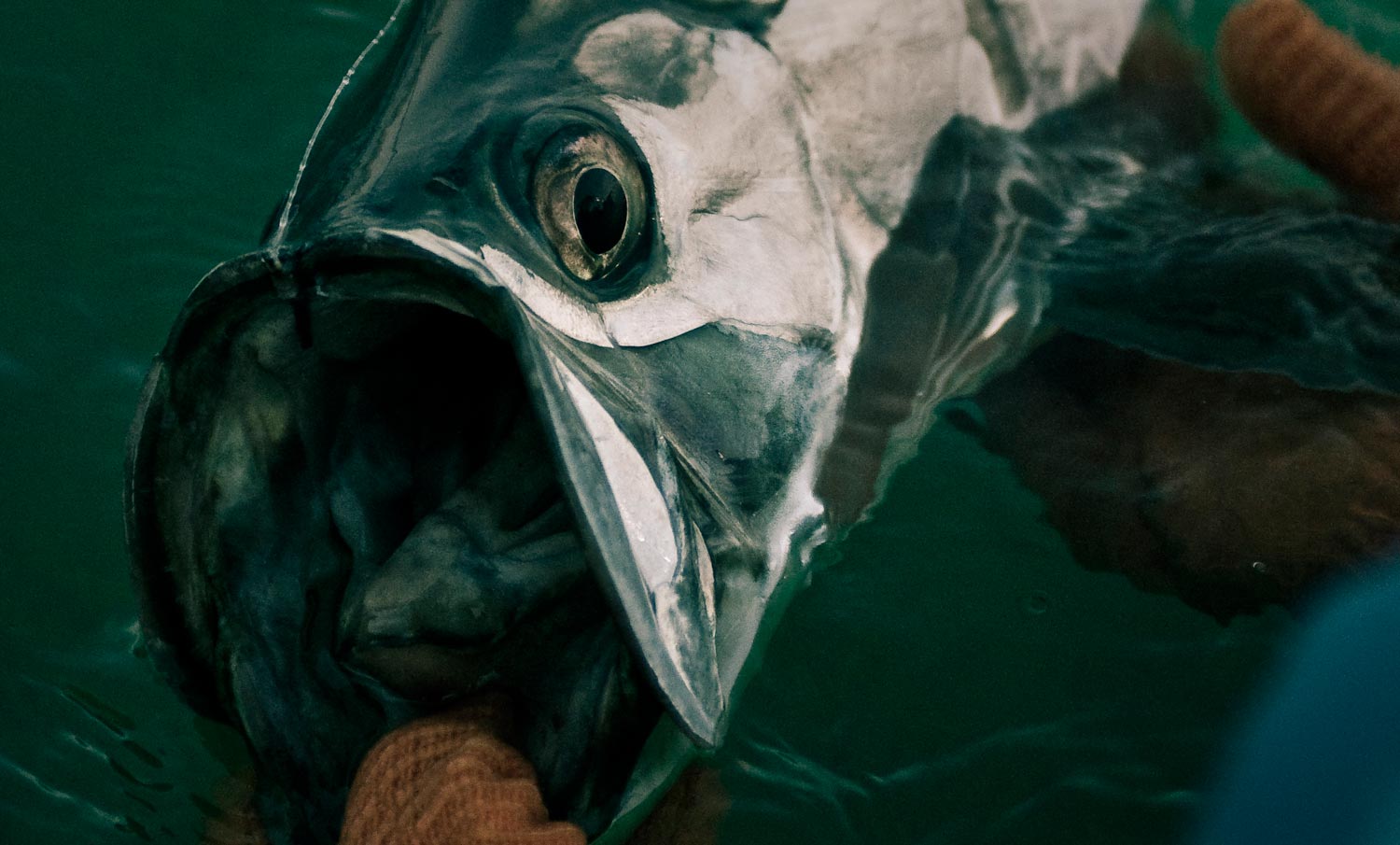
HOW DOES A SIX FOOT LONG FISH VANISH?
It’s hard to imagine, but they do. Even big schools of tarpon can sneak up on you with surprising regularity. Tarpon fishing is a game of strategy and the earlier you see the fish, the better your chances of success. Having the time to set up a good angle and make a plan are key. It’s also important to read the fish’s attitude and in the best case see the eat. Good eyes are as important as the right fly.
Like any flats fishing, good polarized glasses are a must and your guide will be a valuable resource. Even with the help of a guide, knowing what to look for and what it means when you see it will make the difference between frustration and elation. Here are some tips to help you succeed.
Know what to expect
Tarpon shots come in a variety of favors. Tarpon can be laid up, sitting still alone or in pairs. They can be in schools, from three or four fish to three or four hundred. Those schools can be milling around on a flat or on the move. They can move as a big group or a single file procession. These processions sometimes swim in a perfect circle called a daisy chain. Knowing what each of these options looks like will help you quickly identify the fish’s behavior and plan your presentation.
Scan the water
It’s easy to get tunnel vision when you’re on the bow of a flats boat. Fixating on a suspicious shadow or looking where you expect to see fish can blind you to approaching fish. Keep your head on a swivel and scan the water from side to side and near to far. Spend a little extra time studying water where visibility is poor. Fish can literally come from anywhere so don’t get caught staring a hole in the water.
Motion
The easiest fish to see are the ones on the move. The human eye picks up motion quickly and if you are scanning properly you will pick up moving fish from a good distance. Just be aware that you could be looking for a single fish, a line of fish or a big school. A school of several hundred tarpon looks like the shadow of a cloud moving on the water. Make sure you know which direction the clouds are moving.
Color
Like bonefish, tarpon have highly reflective sides which offer nearly perfect camouflage. What gives them away is
Getting the Big Picture On Brook Trout
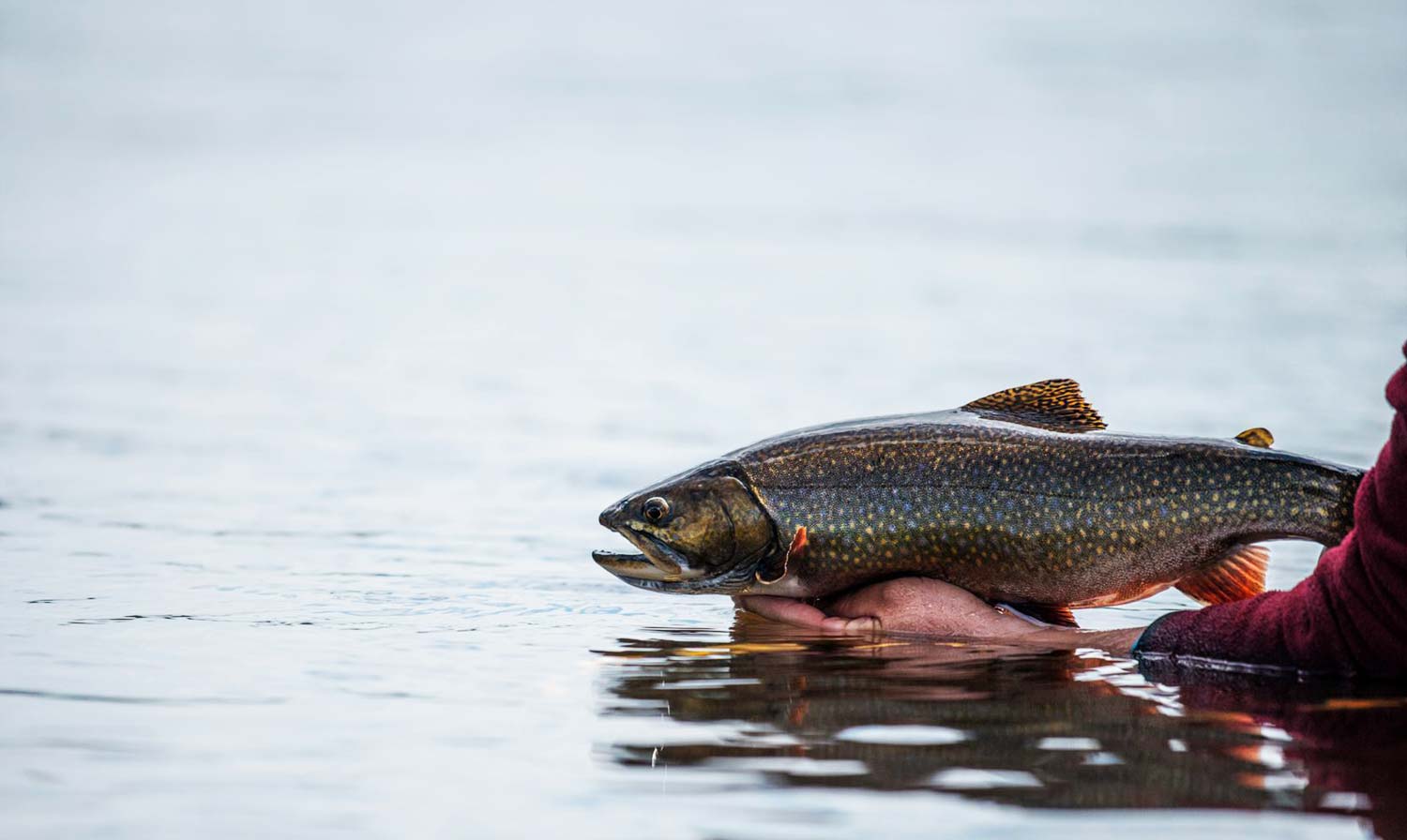
By Jason Tucker
I recently read an article on brook trout, about what beautiful delicate gems they are. It’s true for a lot of us that brook trout are a small, colorful, feisty reward for a day’s fishing. They are often some of the smallest fish we seek. They normally live in the smallest streams and creeks, or in the headwaters of our trout streams where it is easier to step across than wade them. Yeah, we’ve heard of bigger fish in far off destinations, but surely these are the exception, fish that through a series of happy accidents go against the grain and get unusually large.
That would be a complete misconception, and the small fish that most of us see and catch, at least in the United States, are fish holding on at the margins of their range, in remnants of water barely suitable for their existence.
It is impossible to understand brook trout without fishing for them in their Canadian strongholds. The small, delicate looking gems we are used to seeing in the United States are only representative of one form of the species. It is a truly remarkable adaptation that extends their range far outside of what it could normally be, but it doesn’t fully represent the species.
Living in a small, headwaters-dwelling form has distinct ecological and evolutionary advantages, allowing them to hang on in areas that have generally become unsuitable for them. In effect, brook trout are superbly adapted to Ice Age cycles, in which their northern habitat becomes unlivable every ten thousand years or so due to encroaching glaciation. Brook trout colonize the leading edges of the glaciers, which have taken them south, all the way into the Smokey Mountains of northern Georgia, a place that is otherwise inhospitable for brook trout. When the glaciers retreat, remnant populations are left in the few waters that remain cold and clean enough to harbor them, usually high up on the mountains. These small stream trout are usually quite small themselves, rarely reaching a pound in weight, and often living only about three years.
Their prime range however, covers a vast area of Canadian Shield country that runs from western Ontario, Lake Superior in the south, on up to Hudson Bay in the north, across all of Quebec, and on east to Labrador. In this region
Read More »